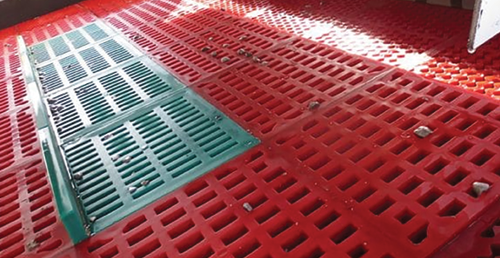
Injection molding is used to manufacture Polydeck’s Rubberdex and Polydex screen panels, ensuring consistent quality and durability. Understanding why injection molding matters can help producers and plant managers make more informed decisions when selecting screening solutions.
Precision and uniformity – Injection molding allows for the precise formation of apertures and reinforcement patterns in each panel. This uniformity is essential for achieving consistent material flow and minimizing unexpected wear. Consistent aperture sizes and shapes ensure that the screening process runs smoothly, reducing variability and the risk of premature panel failure. For plant managers, this translates into more predictable maintenance schedules and fewer disruptions.
Increased wear life – The injection molding process strengthens key areas of the panels, particularly in zones exposed to high impact or abrasion. Reinforced regions help extend the overall wear life of the screen panels, which is crucial in heavy-duty applications like scalping or fine material classification. The longer the panels last, the less often they need to be replaced, leading to less downtime and reduced maintenance costs.
Performance under demanding conditions – In demanding screening environments, especially those involving high pressure or abrasive materials, panels must be able to withstand stress without compromising performance. Injection molding provides a robust bond between the rubber and reinforcement materials, which enhances the panels’ ability to endure harsh conditions over time.
Operational efficiency and cost management – For producers, the durability and consistency of injection-molded panels help streamline operations. Longer wear life and consistent panel quality contribute to more reliable screening, reducing unexpected maintenance and operational interruptions. The ability to plan maintenance based on predictable wear patterns also aids in maintaining consistent throughput, which ultimately impacts overall production efficiency.
